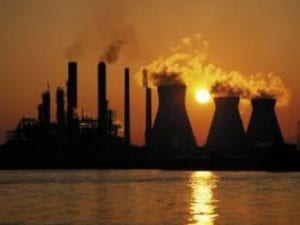It has been a year since South Africa joined the global community to commemorate the International Day for the Preservation of the Ozone Layer on the 16th of September.
It has been a game of two halves since then, the end of 2019 promising a great start for 2020 in terms of carbon-consciousness in the country due to the implementation of the new Carbon Tax Law. However, the pandemic that struck the globe early this year has resulted in a carbon tax deferment along with other relief measures taken by the South African government. President Cyril Ramaphosa stressed, in his weekly column to the nation on the 24th of August 2020, that even though the coronavirus pandemic has been devastating, unless we act now, the impact of climate change on humanity will be catastrophic. Climate change has long been a measurable reality for South Africa. We have felt its effects in adverse weather conditions, droughts, flooding and rising temperatures. Global warming cannot remain in the back seat; it is time to shift to a more carbon-conscious mindset, regardless of industry. Yet climate change goes further than changing weather patterns, it impacts water resources, food security, ecosystems and biodiversity. As we commemorate World Ozone Layer Day, Eckart Zollner, Head of Business Development at EDS Systems, a technology company that has developed a carbon tax tool for business, believes that organisations and individuals alike must play their part in reducing GHG emissions. He says, “The cost of ignoring climate change will be far higher than the cost of reducing emissions.” What is global warming? Global warming is a continuous temperature increase of the earth’s atmosphere that is explained by the greenhouse effect caused by rising levels of carbon dioxide, CFCs, and other manmade pollutants. These pollutants collect in the atmosphere, absorb and retain sunlight and solar radiation from the earth’s surface, slowly pushing temperatures higher. Climate change is already having devastating, long-lasting effects and many of the physical consequences of global warming are already visible. These are evident with extreme weather patterns, melting glaciers, rising sea levels and seasonal timing changes which in turn impacts food and water security severely, placing human and animal health and life at risk.What businesses can do
Businesses are key to engaging stakeholders across the organisation and supply chains in a bid to be more carbon conscious. The start of course is an introspection, businesses need to examine ways to reduce their emissions, while simultaneously cleaning up their impact on the environment. “This involves investigating opportunities to reduce or eliminate emissions from production, along with embracing cleaner energy alternatives to traditional fossil-based fuels. Here, carbon analytics tools provide value, along with the ability to visualise emissions sources”, adds Zollner. “Such tools not only remove the complexity from the mandatory GHG reporting, but furthermore provide a near real time view on GHG emissions and the effect of a manufacturing process change.” What can individuals do We tend to consider Global warming and GHG emissions a corporate issue, but as end-consumers of products and services produced by businesses, customers have the power to impact the environment as a collective. Case in point, in the first-world, brands have begun printing their emission statistics on their products due to consumers making carbon-conscious purchasing decisions. When organisations can measure their GHG emissions in real-time, they can make the appropriate plans to reduce these emissions across their product/service life cycle. Brands and organisations feel the need to change because their customers demand it, being eco-friendly and emission compliant becomes a prerequisite to doing business. Carbon Tax compliance is far from being an ‘added liability’ and carbon consciousness is not a passing fad, but rather an opportunity to quicken the pace towards a sustainable and inclusive economy.







